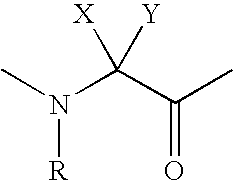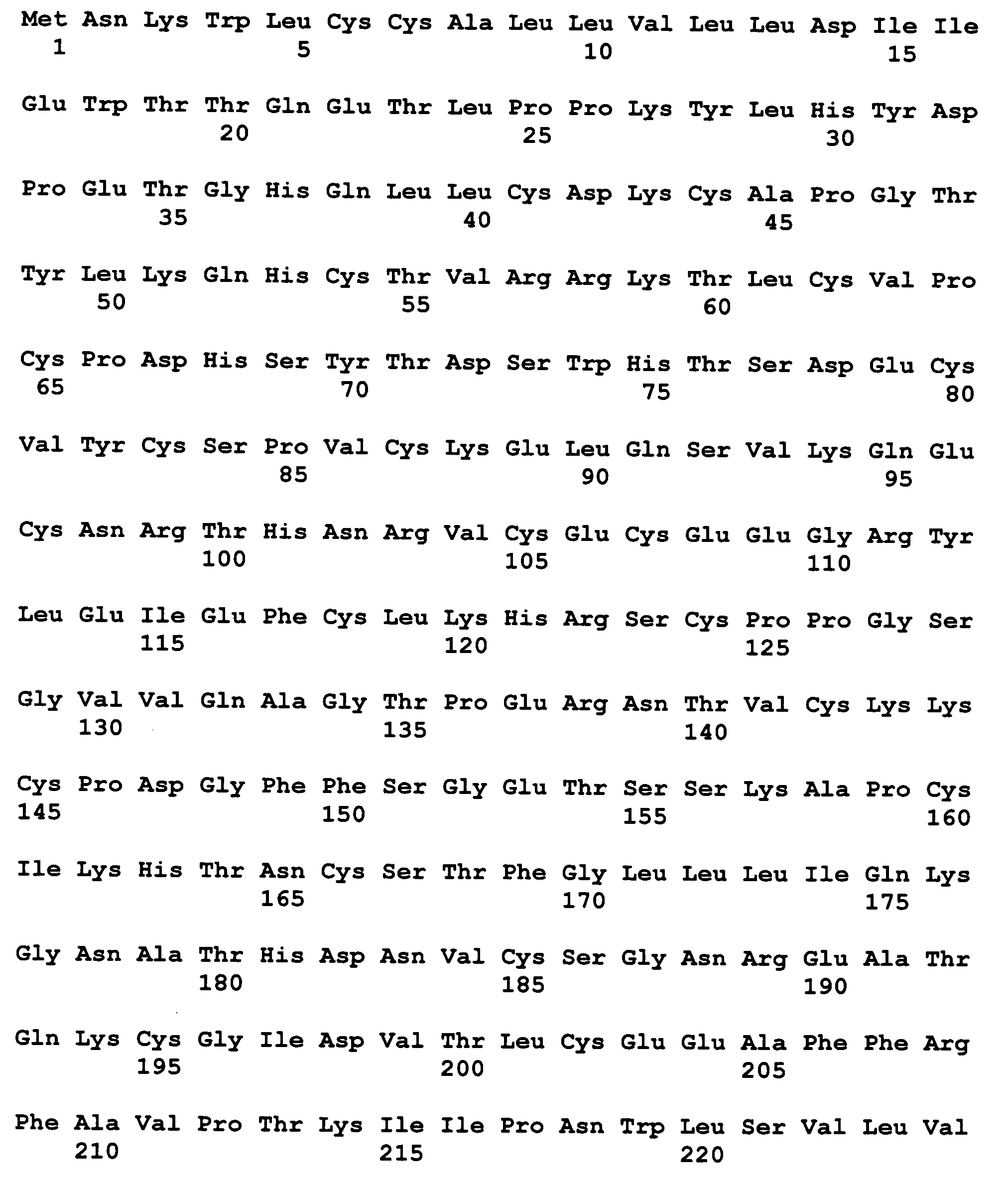Compositions and methods for the prevention or treatment of cancer and bone loss associated with cancer
a cancer and bone loss technology, applied in the field of cancer bone loss and cancer chemotherapy, can solve the problems of pathologic fractures, death and morbidity, and wide spread of complications that are often fatal, and achieve the effects of preventing and/or treating bone loss, preventing osteosclerotic bone metastases, and inhibiting bone resorption
- Summary
- Abstract
- Description
- Claims
- Application Information
AI Technical Summary
Benefits of technology
Problems solved by technology
Method used
Image
Examples
example 1
Construction and Expression of OPG Fusion Polypeptides
[0159] Plasmids encoding OPG[1-194]-Fc, OPG[1-201]-Fc, OPG[1-194]-FcΔC, OPG[1-201]-FcΔC, OPG[1-194]-FcG10, and metFcΔC-OPG[22-194] for use in producing the corresponding OPG fusion polypeptides are constructed generally as described in WO97 / 23614 and in copending U.S. Ser. No. ______, filed Sep. ______, 1999, both of which are incorporated by reference. The polypeptide sequences are shown in FIGS. 3-8, respectively.
[0160] Expression of an OPG fusion polypeptide in mammalian and bacterial host cells was carried out generally as described in WO97 / 23614.
example 2
OPG Activity in a Breast Cancer Model for Lytic Bone Disease
[0161] Female Balb / c nu / nu mice aged 7-8 weeks were injected with human MDA-MB-231 breast cancer cells (1.0×105 cells / mouse; ATCC accession no. HTB-26) directly into the systemic circulation via the left ventricle. Immediately following tumor inoculation, the mice were treated by intravenous injection with either phosphate buffered saline (PBS) or met FcΔC-OPG[22-194] (25 mg / kg) three times per week for 4 weeks. The number of lesions / mouse was assessed from radiographs. Bone, heart, lung, liver, kidneys, adrenals, ovaries, brain, pancreas and spleen were evaluated histologically for the presence of tumor foci as described below.
[0162] As shown in FIG. 9, radiographic lesions are apparent in the long bones 4 weeks after inoculation with MDA-MB-231 cells. The associated bone destruction is completely inhibited by intravenous administration of met FcΔC-OPG[22-194] at a dose of 25 mg / kg three times per week commencing at the ...
example 3
OPG Activity in a Mouse Adenocarcinoma Model for Lytic Bone Disease
[0163] Female CDF1 mice aged 7-8 weeks were injected with murine C26-DCT adenocarcinoma cells (obtained from the Tumor Repository of the National Cancer Institute; 1.0×105 cells / mouse) directly into the systemic circulation via the left ventricle. Immediately following tumor inoculation, mice were treated by intravenous injection with either PBS or met FcΔC-OPG[22-194] (25 mg / kg) every 3 days for 9 days. On day 10 the mice were radiographed and tissues were sampled for histological evaluation.
[0164] As shown in FIG. 9, radiographic lesions are evident 10 days after intra-cardiac inoculation of C26-DCT cells (3.1±0.6 lesions / mouse) and bone destruction is inhibited by intravenous injection of FcdC-OPG[22-194].
[0165] In an additional study, mice were inoculated with C26-DCT cells, as above, and treated by intravenous injection with either PBS or met Fc-OPG[22-194] at 3, 1, 0.3, or 0.1 mg / kg every 3 days for 9 days. ...
PUM
| Property | Measurement | Unit |
|---|---|---|
| molecular weight | aaaaa | aaaaa |
| molecular weight | aaaaa | aaaaa |
| pH | aaaaa | aaaaa |
Abstract
Description
Claims
Application Information
 Login to View More
Login to View More - R&D
- Intellectual Property
- Life Sciences
- Materials
- Tech Scout
- Unparalleled Data Quality
- Higher Quality Content
- 60% Fewer Hallucinations
Browse by: Latest US Patents, China's latest patents, Technical Efficacy Thesaurus, Application Domain, Technology Topic, Popular Technical Reports.
© 2025 PatSnap. All rights reserved.Legal|Privacy policy|Modern Slavery Act Transparency Statement|Sitemap|About US| Contact US: help@patsnap.com



